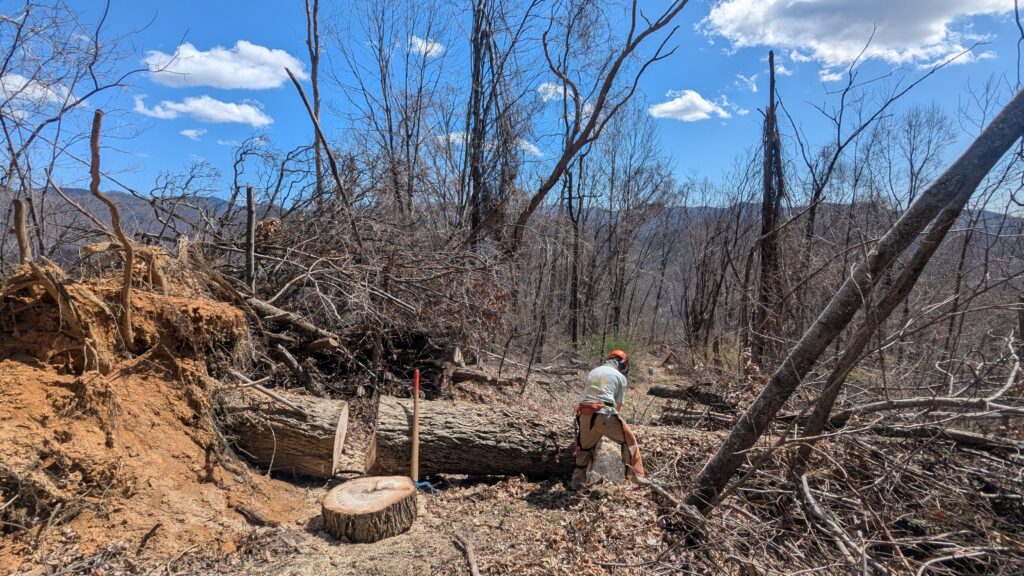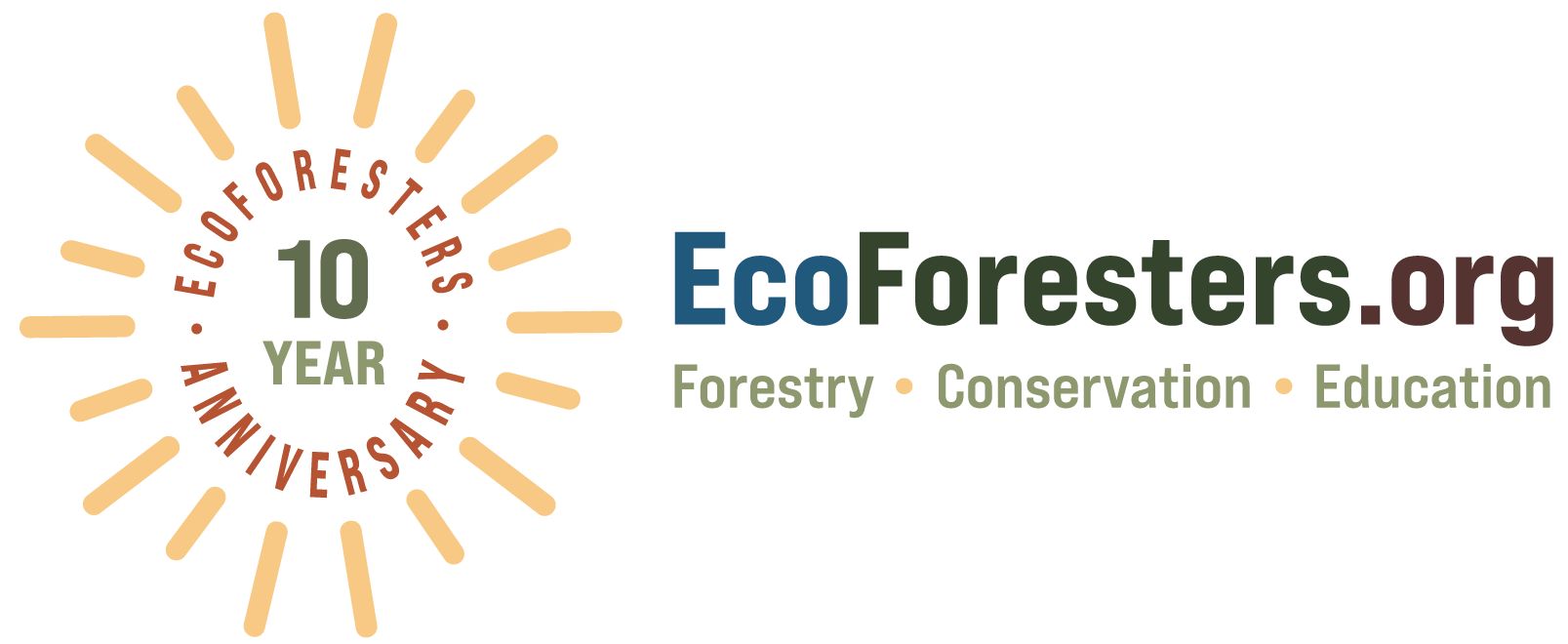Helene Impacted Over 800,000 Acres of Forest
It’s safe to say that the damage from Hurricane Helene is unprecedented, creating challenges that will impact the landscape for generations to come. Our team has been using remote monitoring from satellites and drones to get a better understanding of the destruction, as well as the opportunities for restoration. Each forest stand will have its own unique challenges that EcoForesters and others will be addressing in the coming year, but here are insights into what we are seeing so far.
In addition to the massive toll on people and development, many forests have been heavily damaged by Hurricane Helene. The main current concern to address quickly is the potential for ongoing erosion from badly damaged forest roads, landslides, or just ground disturbance. Any disturbed soil should be stabilized and reseeded as soon as possible.
Risk from more severe fires due to increased fuels is a concern too. Clearing woody material at least 30’ away from structures is essential to reduce fire risk, possibly farther, then clear roads for access in case of fire with increased fuel loads. Firewise gives good directions for fire safety around homes. Community Resource and Conservation Districts may also have funding to help with Firewise practices.
Water quality is of utmost concern and state regulations still apply in stream side areas. Even if trees are down in stream sides areas, ground disturbance still must be minimized in these areas to meet environmental regulations.
Damaged forests will re-grow. Virtually all of WNC was clearcut within the last 100-150 years. The forests we have (or had) were natural 2nd or even 3rd growth. It will take years and even decades, but hardwood tree stumps will resprout and ample native seeds have been left by the pre-existing forest. And we have a chance to shape the future forest to make it more diverse and of higher quality for wildlife and/or timber. As the forest regrows we can favor more desirable trees that need help (like oak) by releasing them from their more common competition or invasives.
If invasives were or are present they will need to be carefully monitored and controlled, as they spread very rapidly and will take over the new growing space with more sunlight. If not controlled they will outcompete and grow over native trees, stopping the natural forest from regenerating
It’s important to document any damage done to your forest, infrastructure, or equipment before work is done for possible reimbursement by insurance or emergency relief funds.
Trees that came down or are badly damaged (>50% crown broken off) can be salvage logged, if still solid, but usually at no profit to the landowner. Finding loggers to work on salvage timber harvests could be the limiting factor.
Financial assistance is available for forestland owners impacted by Helene through the Emergency Forest Restoration Program. Your local county USDA office is likely to be your best first contact for that. Our work is just beginning. We will be surveying landowners soon to better understand needs, but please reach out to our staff if you have questions or need assistance.

Here are some key facts to determine feasibility for a salvage timber harvest:
1) Logs need to be at least 12” diameter at the small end and be solid for at least an 8′ length to have any value and only logs that are without any significant damage (e.g. no splitting) or major branches are merchantable.
2) Downed timber is only merchantable for about up to a year before it starts to decay and loses all value. Best to harvest high value timber as quickly as possible.
3) The primary merchantable, possibly, profitable species is oak (especially white oak); large yellow poplar and white pine are selling for close to the salvage logging cost (i.e. no profit for landowner).
4) Loggers usually want at least 10-acres of good timber, especially under these demanding circumstances.
5) Sites with good accessibility to, and around, them for large machinery are much more feasible. Loggers and mills were already in short supply so only larger tracts with good access may be appealing.
-If you are interested in finding a buyer here is a link to timber buyers searchable by county.
Here are some potential issues to consider:
A) Protecting water quality is the key first thing to do. Stop any ongoing erosion from badly damaged roads, landslides, or any ground disturbance.
B) Road building is the biggest impact of any woody material removal. So logging/clearing still must be planned well especially with increased erosion risk.
C) Smaller (<12″ diameter at small end) or damaged timber and unmerchantable species will be left on site, so it won’t look good for a few years at least, until things regrow. Though unsightly to humans often, the large amount of downed woody material is good mulch to prevent erosion and future fertilizer for the forest to regrow, as well as good habitat for small animals. If you want your forest “cleaned up” that will be a significant cost to you.
D) The risk of a severe wildfire will increase with all this extra downed fuel, especially as it dries (starting in Fall of 2025). So if there are large amounts of downed trees downhill from any structures or other areas you want to protect, then a cleared buffer area (30’ up to 100’ depending on many factors like the size of the material) should be established to reduce risk to areas you want protected.
E) But trees do regrow well naturally around here. So planting should not be necessary, unless there is erosion and/or bare mineral soil. Hardwood (deciduous) tree stumps will resprout and grow quickly, and there are usually plentiful seeds. However, this also can be an opportunity to plant highly desired trees (like oaks) if you are willing to tend them every couple years for 5-10 years. Similarly, with natural regeneration you could wait 5-10 years and then release the more desirable saplings.
F) After a major disturbance, it is important that many mostly intact trees (>50% live crown remaining), especially oaks and other trees that provide good food for wildlife, be left to provide some habitat structure and as future seed sources.
G) After disturbances, Non-native invasive plants can and will quickly infest more areas and/or become more severe. They should be carefully monitored and controlled as needed, especially this coming spring before they get too bad.
